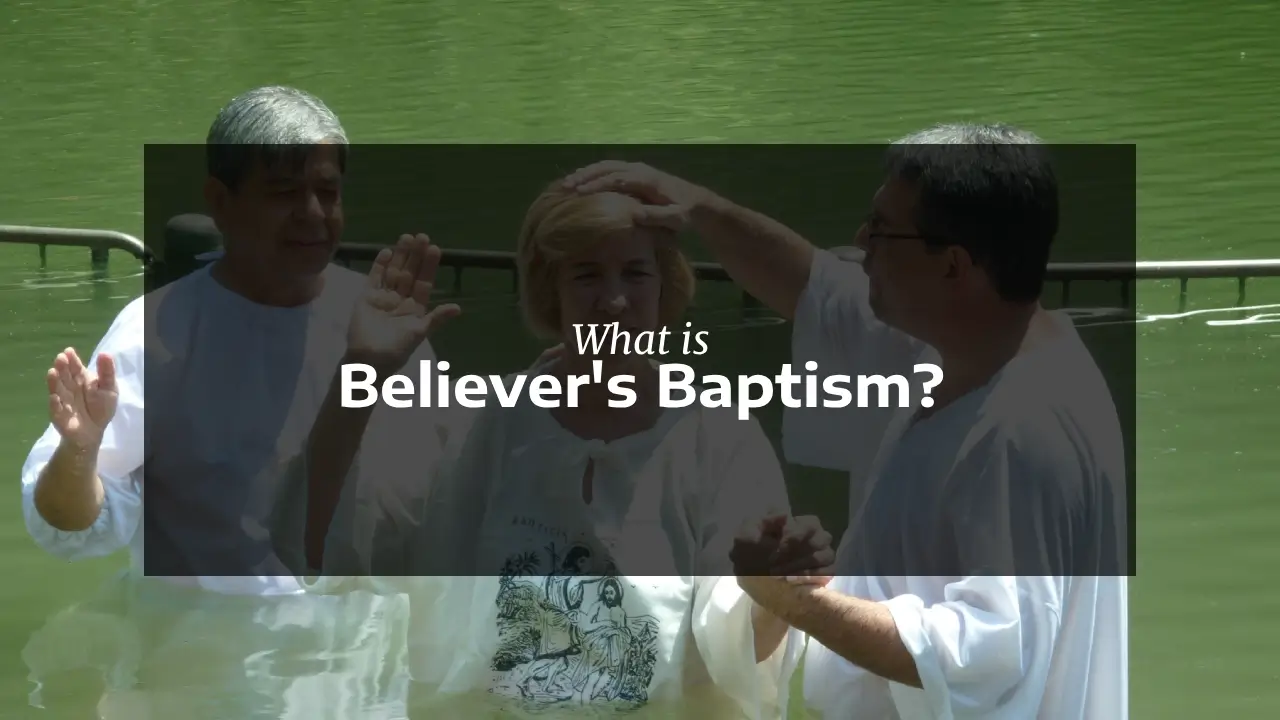Believer’s Baptism is a central practice in denominations such as Baptists, Evangelicals, Churches of Christ, and certain Pentecostal groups, emphasizing that baptism should be reserved for individuals who have made a conscious decision to follow Jesus Christ. Typically administered to adults or older children capable of professing faith, this practice reflects a commitment to personal choice and spiritual accountability. Within Believer’s Baptism, two distinct perspectives emerge: one, prevalent among Baptists, views baptism as a symbolic ordinance, a public declaration of faith that is not necessary for salvation; the other, held by Churches of Christ and some Pentecostals, considers baptism a sacramental act essential for salvation, contingent on prior faith and repentance. Both perspectives unite in rejecting infant baptism, prioritizing the individual’s faith as the prerequisite for this sacred rite, distinguishing it from infant-focused doctrines like Baptismal Regeneration and Covenantal Baptism.
Theological Foundations
The theology of Believer’s Baptism is grounded in the conviction that baptism is an act of obedience and faith, reflecting a personal commitment to Christ. In the symbolic view, baptism serves as an outward expression of an inward transformation, publicly identifying the believer with Christ’s death, burial, and resurrection. It is a powerful testimony to the believer’s new life in Christ but is not seen as a requirement for salvation, which is secured through faith alone. This perspective emphasizes the importance of conscious choice, arguing that only those who can understand and embrace the gospel should be baptized. In contrast, the necessary-for-salvation view asserts that baptism is a divinely ordained act through which God grants forgiveness of sins, but only for those who have repented and believed. This view sees baptism as the culminating moment of conversion, where faith and obedience meet God’s grace. Both perspectives reject infant baptism, contending that scriptural examples of baptism involve believers who have made a deliberate choice, thus highlighting the priority of personal faith over inherited or communal membership.
Scriptural Support
The scriptural foundation for Believer’s Baptism is rooted in passages that emphasize the connection between faith and baptism, with interpretations varying by perspective. In the Gospel of Matthew, Jesus commissions His disciples to make disciples and baptize them (Matthew 28:19-20), suggesting that baptism follows the process of becoming a disciple. The Acts of the Apostles provides a vivid example in the story of the Ethiopian eunuch, who is baptized after expressing belief in Jesus (Acts 8:36-38), illustrating baptism as a response to personal faith. Paul’s letter to the Romans describes believers as being “baptized into Christ Jesus” and into His death (Romans 6:3-4), a passage often cited by the symbolic view to highlight baptism’s role in identifying with Christ’s redemptive work. For those who view baptism as necessary for salvation, Peter’s command at Pentecost to “repent and be baptized” for the forgiveness of sins (Acts 2:38) is pivotal, suggesting that baptism is integral to the remission of sins. Similarly, the Gospel of Mark states that “whoever believes and is baptized will be saved” (Mark 16:16), reinforcing the link between baptism and salvation. The First Epistle of Peter further supports this view, declaring that baptism “now saves you” (1 Peter 3:21), drawing a parallel to Noah’s salvation through water. These passages collectively provide a scriptural basis for Believer’s Baptism, with debates centering on whether baptism is a symbolic act or an essential component of salvation.
Early Church Father References
While the early church predominantly practiced infant baptism, certain writings offer partial support for Believer’s Baptism, particularly in emphasizing the importance of conscious faith. Tertullian, a second- and third-century theologian, provides a notable example in his later writings, where he suggested delaying baptism for children until they could understand and request it (On Baptism, 18). He described baptism as a “sacrament of water” that washes away sins, but his caution about baptizing infants reflects a concern for personal accountability that resonates with Believer’s Baptism. Cyprian, a third-century bishop, emphasized baptism’s necessity for the remission of sins (Epistle 71), aligning with the necessary-for-salvation view, though he supported infant baptism as a normative practice. His focus on baptism’s transformative power provides some theological continuity with those who see baptism as essential for believers. However, the early church’s widespread practice of infant baptism, as evidenced by figures like Origen (Commentary on Romans, 5.9) and Augustine (On Baptism, Against the Donatists, 4), poses a challenge to Believer’s Baptism’s historical continuity. Tertullian’s writings, in particular, offer a glimpse of early Christian thought that aligns with the emphasis on conscious faith, providing a partial precedent for this perspective.
Conclusion
Believer’s Baptism represents a theological commitment to personal faith and obedience, with its symbolic and necessary-for-salvation perspectives offering distinct interpretations of baptism’s role. Whether viewed as a public declaration of faith or a sacramental act essential for salvation, this practice underscores the importance of individual choice in responding to the gospel. Supported by scriptural passages such as Matthew 28:19-20, Acts 8:36-38, Romans 6:3-4, Acts 2:38, Mark 16:16, and 1 Peter 3:21, and bolstered by select early church writings, particularly Tertullian’s caution about infant baptism, Believer’s Baptism stands in contrast to infant baptism doctrines like Baptismal Regeneration and Covenantal Baptism. Its emphasis on conscious commitment continues to shape the worship and theology of millions, reflecting the diversity of Christian thought and the enduring significance of baptism as a marker of faith.






